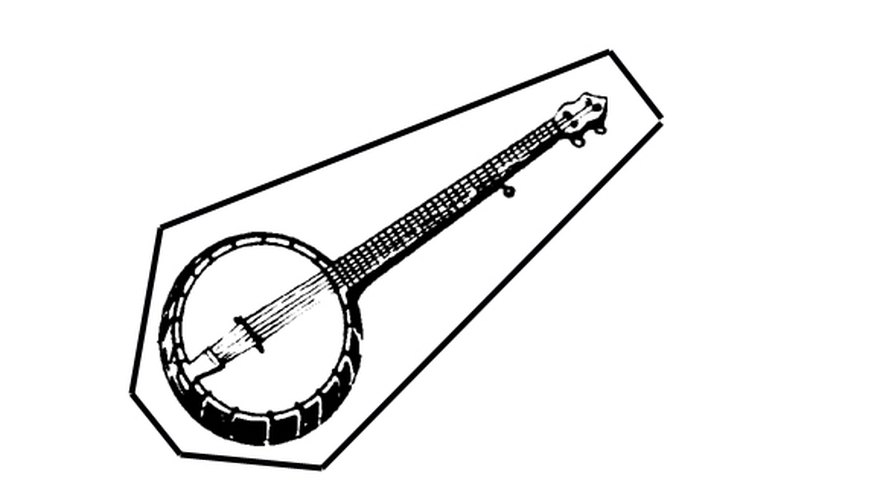If you have a banjo without a case--one that didn't come with one, or an unusually shaped banjo that's hard to find a case for--you might want to try your hand at this quick woodworking project. You'll end up with an unusual banjo case that is the talk of the bluegrass festival.
Lay your banjo on the plywood, and with a straightedge, mark the shape shown below around the instrument. Allow a few inches for the thickness of the sides and room to add foam blocks to secure the banjo in place.
- If you have a banjo without a case--one that didn't come with one, or an unusually shaped banjo that's hard to find a case for--you might want to try your hand at this quick woodworking project.
- Allow a few inches for the thickness of the sides and room to add foam blocks to secure the banjo in place.
Cut matching coffin-shaped pieces for the top and the bottom of the case. Measure how thick your banjo is and make the sides an inch and a half taller. This allows for a 3/4-inch or 1-inch foam top and bottom to protect the instrument.
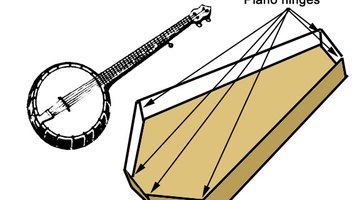
Use a protractor to figure the angles of the end cuts of each side so that the two sides meet properly. Test fit the sides as you go to prevent mistakes. Measure twice, cut once. Assemble the sides on top of the bottom piece. Install piano hinges or a pair of strap hinges on the outside of the box where the sides meet. Glue the sides with carpenter's glue, then mount the hinges with bolts. Predrill the holes and use bolts with the round heads on the inside of the case. These will be padded and covered when you line the case.
- Use a protractor to figure the angles of the end cuts of each side so that the two sides meet properly.
- Predrill the holes and use bolts with the round heads on the inside of the case.
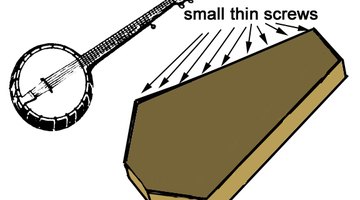
Attach the bottom of the box to the sides using glue and small thin bolts every 4 to 6 inches. Make sure you drill straight into the sides and not into the box. Clamp or weigh down the sides and box while the glue sets.
- Attach the bottom of the box to the sides using glue and small thin bolts every 4 to 6 inches.
- Clamp or weigh down the sides and box while the glue sets.
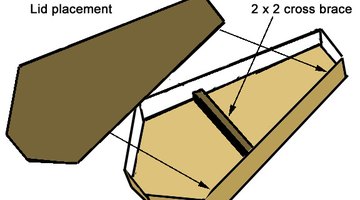
Cut a 2-by-2-inch centre brace and install it in the box in front of where the banjo pot will rest. Attach with screws from outside the box. Mark the position where the hinges, latch and handle go. The handle should be where the loaded case will balance as you carry it.
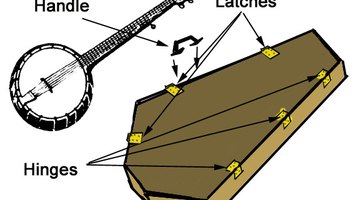
Install the hinges on the right long side so that the lid will open on the side where the handle is located. Don't also put hinges on the short side at the "head of the coffin" (you'd be surprised how many do that and then can't open the box.). Bolt hinges and latches in place through predrilled holes. Put the round bolt heads inside the box. Trim and sand off any excess bolt on the outside so you don't snag things.
- Install the hinges on the right long side so that the lid will open on the side where the handle is located.
- Don't also put hinges on the short side at the "head of the coffin" (you'd be surprised how many do that and then can't open the box.
- ).
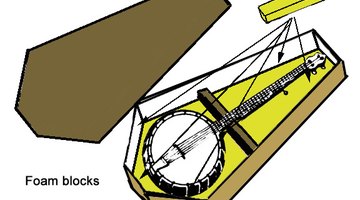
Set the banjo in the box. Cut and place foam blocks around the banjo to brace it in place and mark the placement. Place a layer of foam over the bottom of the case. Attach the foam blocks with glue. Then, use short staples to attach the plush fabric over the foam inside the case. If you spray the foam first with craft glue, the fabric will tend to adhere to the foam and keep it in place better.
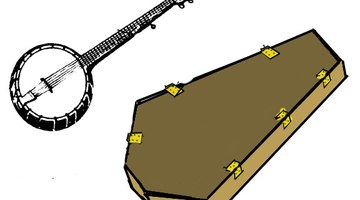
Sand the case, stain and varnish or paint, and you're done. Add decorations, carvings or wooden trim as you like.
TIP
Don't use heavy plywood. The weight increases dramatically. Glue and screw for added strength at joints. You can use a router around the edges of the lid to improve the look. Check online for custom hinges, latches and handles.
